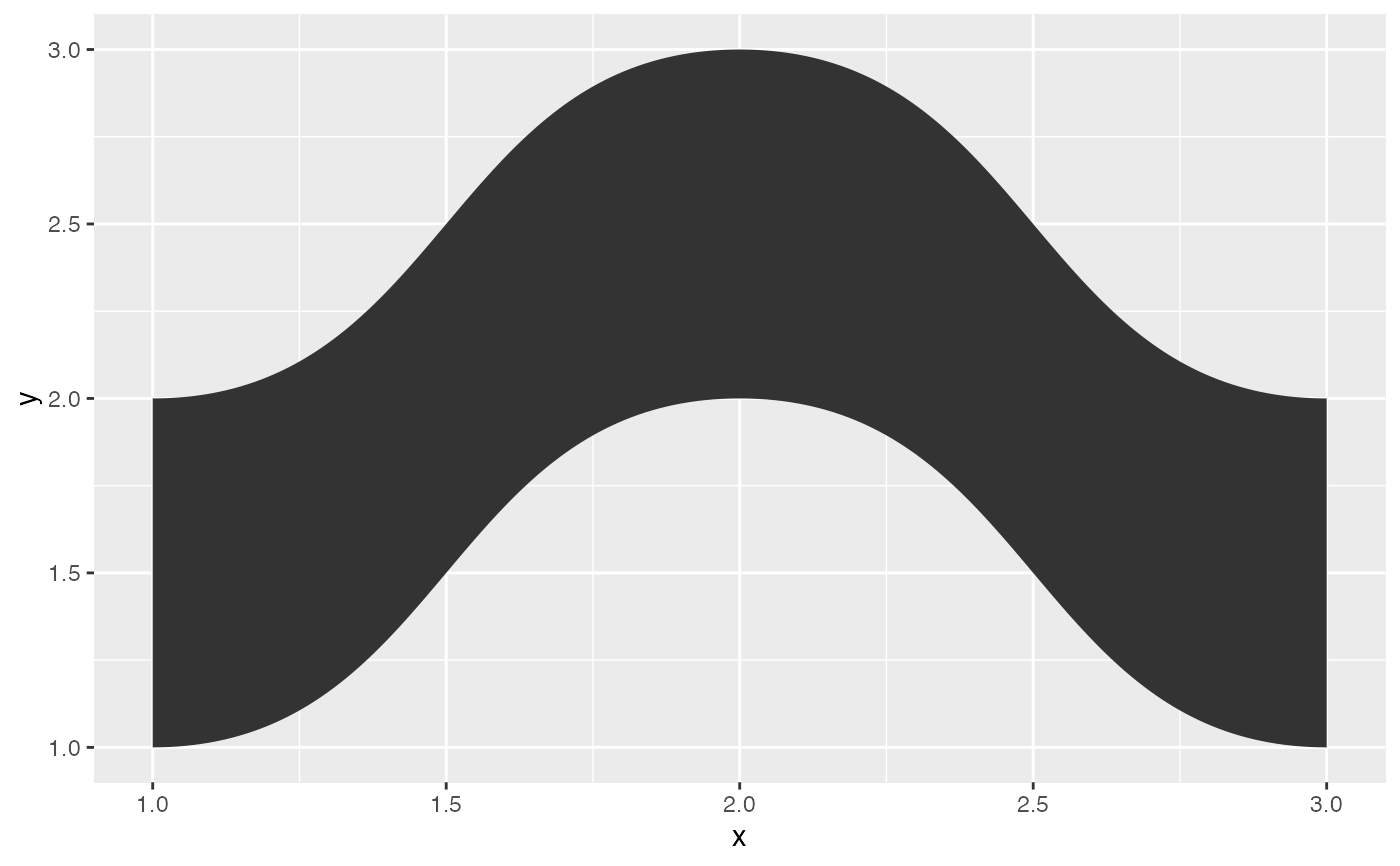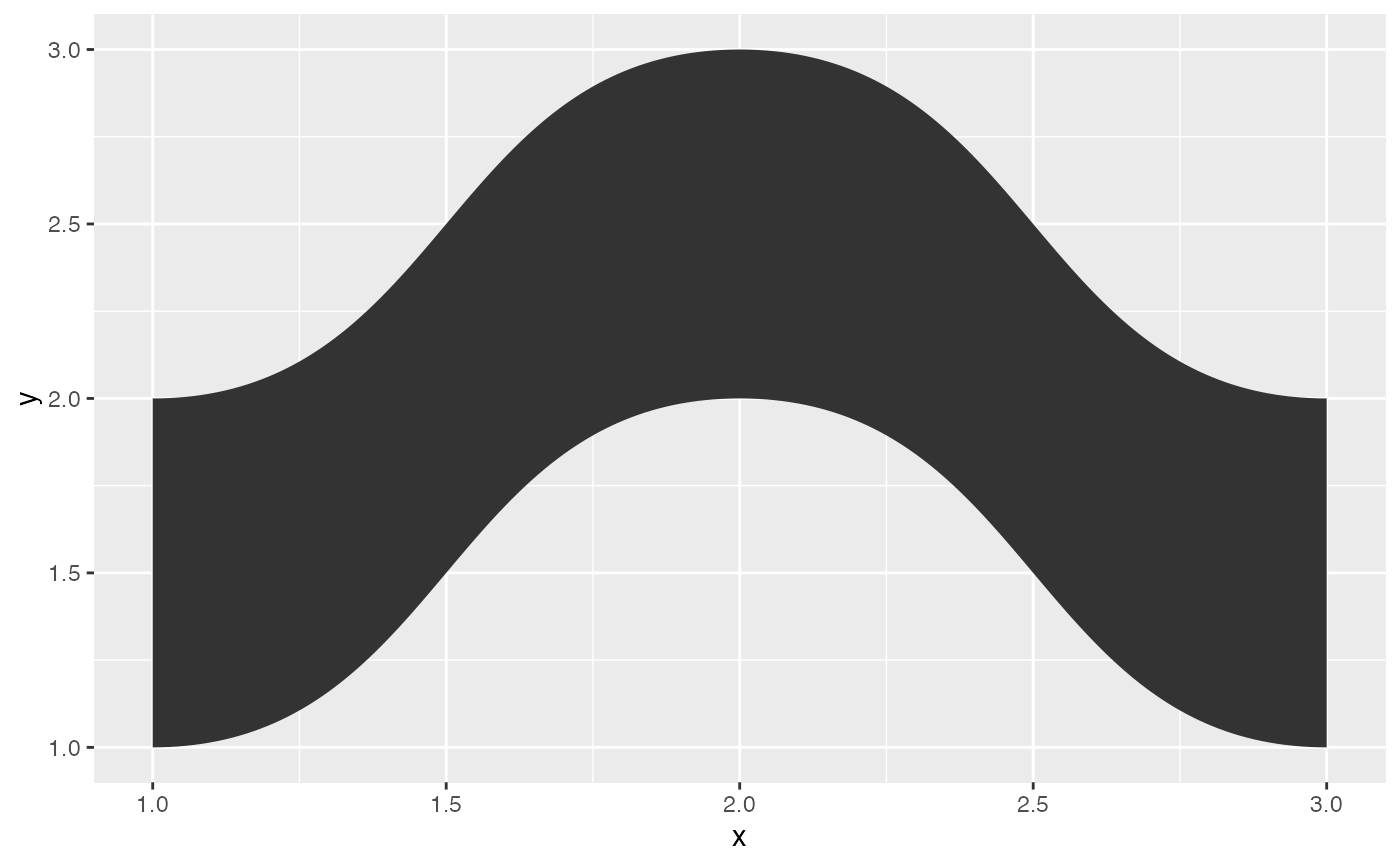Draw an area defined by an upper and lower diagonal into an arc
Source:R/splicejam-geoms.R
geom_diagonal_wide_arc.RdThe geom_diagonal_wide_arc() function draws a thick diagonal, that is, a
polygon confined between a lower and upper diagonal. As with
the diagonal functions in ggforce, the wide diagonal variant is horizontal.
This function joins two adjacent diagonals into one wider arc.
stat_diagonal_wide_arc( mapping = NULL, data = NULL, geom = "shape", position = "identity", n = 100, strength = 0.5, na.rm = FALSE, show.legend = NA, inherit.aes = TRUE, ... ) geom_diagonal_wide_arc( mapping = NULL, data = NULL, stat = "diagonal_wide_arc", position = "identity", n = 100, na.rm = FALSE, strength = 0.5, show.legend = NA, inherit.aes = TRUE, ... )
Arguments
| mapping | Set of aesthetic mappings created by |
|---|---|
| data | The data to be displayed in this layer. There are three options: If A A |
| geom | The geometric object to use display the data |
| position | Position adjustment, either as a string, or the result of a call to a position adjustment function. |
| n | The number of points to create for each of the bounding diagonals |
| strength | The proportion to move the control point along the x-axis towards the other end of the bezier curve |
| na.rm | If |
| show.legend | logical. Should this layer be included in the legends?
|
| inherit.aes | If |
| ... | Other arguments passed on to |
| stat | The statistical transformation to use on the data for this layer, as a string. |
Aesthetics
geom_diagonal_wide_arc understand the following aesthetics (required aesthetics are in bold):
x
y
group
color
size
linetype
alpha
lineend
See also
Other jam ggplot2 functions:
gene2gg(),
plotSashimi(),
splicejam-extensions,
to_basic.GeomShape()
Other jam ggplot2 functions:
gene2gg(),
plotSashimi(),
splicejam-extensions,
to_basic.GeomShape()
Other jam ggplot2 functions:
gene2gg(),
plotSashimi(),
splicejam-extensions,
to_basic.GeomShape()
Examples
data <- data.frame( x = c(1, 2, 2, 1, 2, 3, 3, 2), y = c(1, 2, 3, 2, 2, 1, 2, 3), group = c(1, 1, 1, 1, 1, 1, 1, 1) ) ggplot(data) + geom_diagonal_wide_arc(aes(x, y, group=group))# The strength control the steepness ggplot(data, aes(x, y, group = group)) + geom_diagonal_wide_arc(strength=0.75, alpha=0.5, fill='red') + geom_diagonal_wide_arc(strength=0.25, alpha=0.5, fill='blue')# The diagonal_wide_arc geom uses geom_shape under the hood, so corner rounding # etc are all there ggplot(data) + geom_diagonal_wide_arc(aes(x, y, group=group), radius=unit(5, 'mm'))#> Warning: Ignoring unknown parameters: radius


